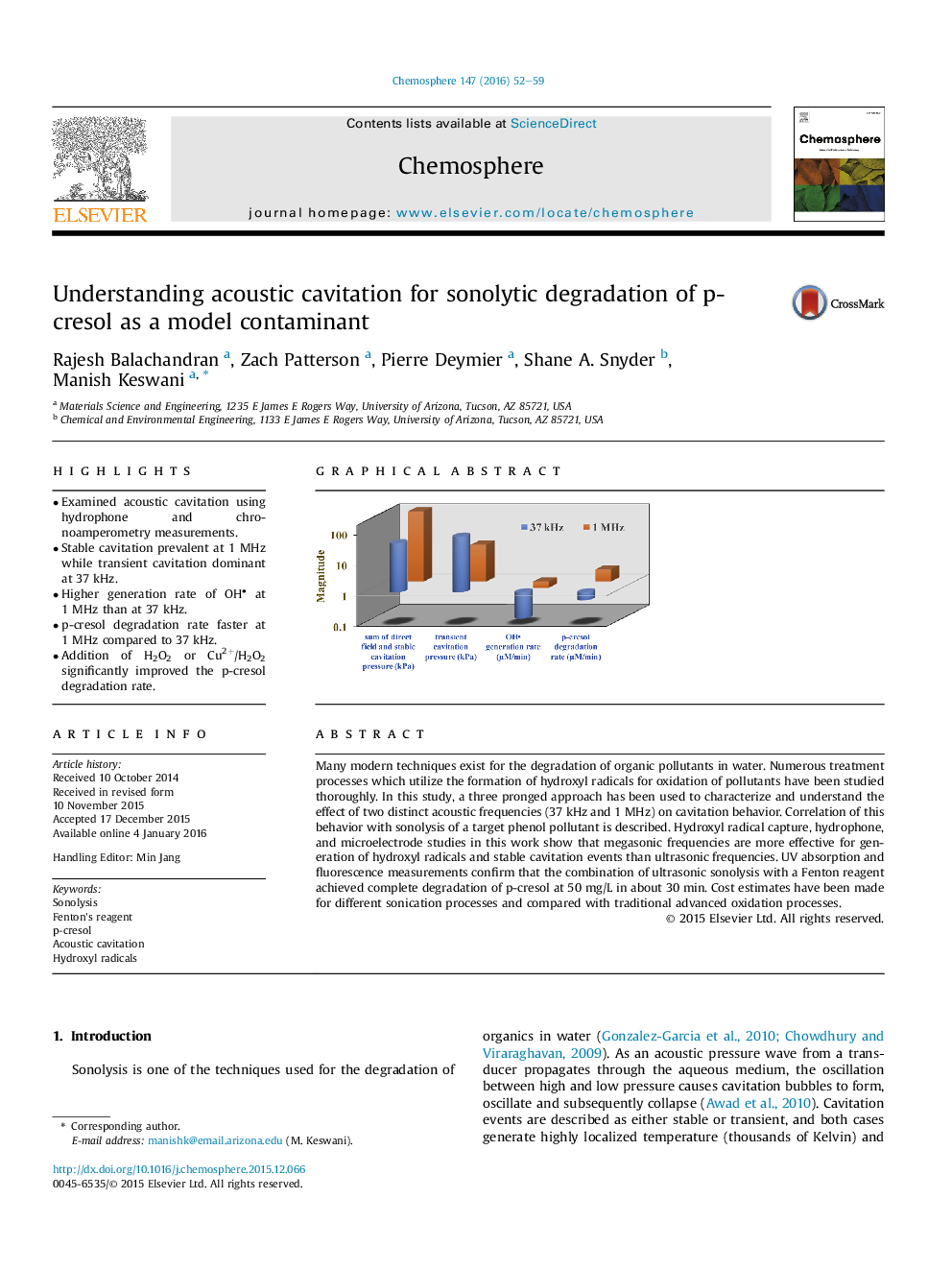| کد مقاله | کد نشریه | سال انتشار | مقاله انگلیسی | نسخه تمام متن |
|---|---|---|---|---|
| 4408053 | 1618824 | 2016 | 8 صفحه PDF | دانلود رایگان |
• Examined acoustic cavitation using hydrophone and chronoamperometry measurements.
• Stable cavitation prevalent at 1 MHz while transient cavitation dominant at 37 kHz.
• Higher generation rate of OH
• at 1 MHz than at 37 kHz.
• p-cresol degradation rate faster at 1 MHz compared to 37 kHz.
• Addition of H2O2 or Cu2+/H2O2 significantly improved the p-cresol degradation rate.
Many modern techniques exist for the degradation of organic pollutants in water. Numerous treatment processes which utilize the formation of hydroxyl radicals for oxidation of pollutants have been studied thoroughly. In this study, a three pronged approach has been used to characterize and understand the effect of two distinct acoustic frequencies (37 kHz and 1 MHz) on cavitation behavior. Correlation of this behavior with sonolysis of a target phenol pollutant is described. Hydroxyl radical capture, hydrophone, and microelectrode studies in this work show that megasonic frequencies are more effective for generation of hydroxyl radicals and stable cavitation events than ultrasonic frequencies. UV absorption and fluorescence measurements confirm that the combination of ultrasonic sonolysis with a Fenton reagent achieved complete degradation of p-cresol at 50 mg/L in about 30 min. Cost estimates have been made for different sonication processes and compared with traditional advanced oxidation processes.
Figure optionsDownload as PowerPoint slide
Journal: Chemosphere - Volume 147, March 2016, Pages 52–59
